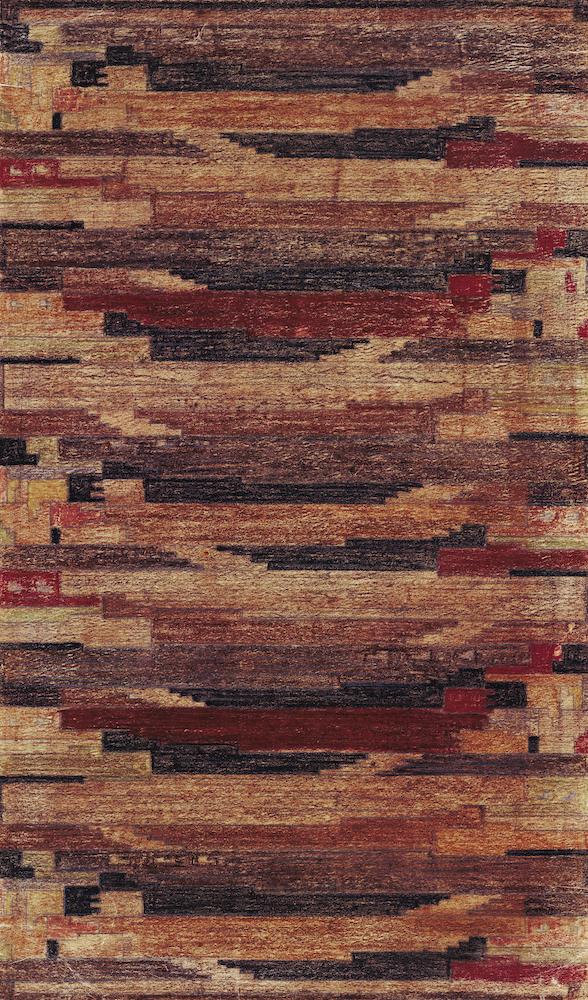
Greta Skogster-Lehtinen (1900–1994) was a versatile pioneer in Finnish textile art. She is best known for flat weave rugs with abstract patterns designed in the spirit of functionalism and monumental tapestries with industrial motifs.
See video and images from the exhibition here.
A significant part of Skogster-Lehtinen’s works in a career that lasted over 50 years were created for interiors in collaboration with architects such as Alvar Aalto and Erkki Huttunen for corporate headquarters, restaurants and hotels. She received demanding commissions already in her twenties, including for the interior of the Finnish Parliament Building. Designing rya rugs, church textiles, damask linen and ship interiors, she became a leading Finnish textile artist in the 1930s.
Skogster-Lehtinen was born into a Finland-Swedish family of entrepreneurs in Hämeenlinna, and she graduated from the Central School of Applied Arts in 1920. She continued to study textile art at Fredrika Wetterhof’s School of Arts and Crafts in Hämeenlinna and also found important inspiration on stays abroad in Europe. Skogster-Lehtinen founded her own weaving company in Hämeenlinna at the age of 21, the firm subsequently operating in Enso and Helsinki up until 1974. Skogster-Lehtinen won a prize at the Milan Triennale in 1933 and was awarded in the World Exhibitions in Barcelona in 1929, Paris in 1937 and in New York 1939.
Skogster-Lehtinen succeeded in integrating abstract motifs with traditional weaving technique executed in durable materials. Her work includes a strong inclination towards experimentation and materials, above all during World War II, when she designed wallpapers and lamp shades of birch bark and straw. She created everyday designs that were accessible to all. Skogster-Lehtinen’s skill in expressing colour and abstraction places her within Finnish modernism while showing textile art in a new light.
Image: Greta Skogster-Lehtinen, October, sketch, 1930s, 49,5 x 35 cm. Craft Museum of Finland Archive Collection.
Current exhibitions
Elverket
Closed
Next exhibition opens in January 2025
Sinne
Closed
Next exhibition opens in January 2025


